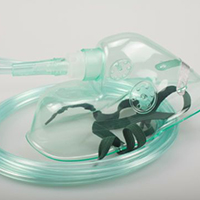 Smart Citations
Smart CitationsSee how this article has been cited at scite.ai
scite shows how a scientific paper has been cited by providing the context of the citation, a classification describing whether it supports, mentions, or contrasts the cited claim, and a label indicating in which section the citation was made.
Oxygen therapy practices in the acutely ill medical patients: A social media-based nationwide study of clinicians’ preferences and summary of current recommendations
Oxygen is the most commonly used drug in emergency medicine. The aim of this study was to identify healthcare professionals’ preferences regarding oxygen therapy in common medical emergencies. An online 9-part-questionnaire was distributed through Facebook to doctors and nurses working in Greek hospitals. The questionnaire included background information of the respondents and addressed individual preferences regarding best oxygenation parameter and oxygen targets in specific acute settings. We received 678 responses and we included 663 in our analysis. We found significant differences between doctors’ and nurses’ attitudes towards oxygenation targets in ARDS, sepsis, acute coronary syndrome, and post cardiac-arrest patients. Nurses preferred a more conservative oxygen strategy compared to doctors. Furthermore, nurses favor SaO2 as the best oxygenation parameter, while doctors prefer PaO2. In our survey, the type of hospital and department of the respondents did not affect the preferred oxygen strategy. Social media-based survey research is feasible and effective. In this single country study, doctors showed a tendency to liberally administer oxygen in acutely ill medical patients. On the other hand, Greek nurses preferred a more conservative approach.
How to Cite
PAGEPress has chosen to apply the Creative Commons Attribution NonCommercial 4.0 International License (CC BY-NC 4.0) to all manuscripts to be published.

 https://doi.org/10.4081/ecj.2020.8867
https://doi.org/10.4081/ecj.2020.8867





